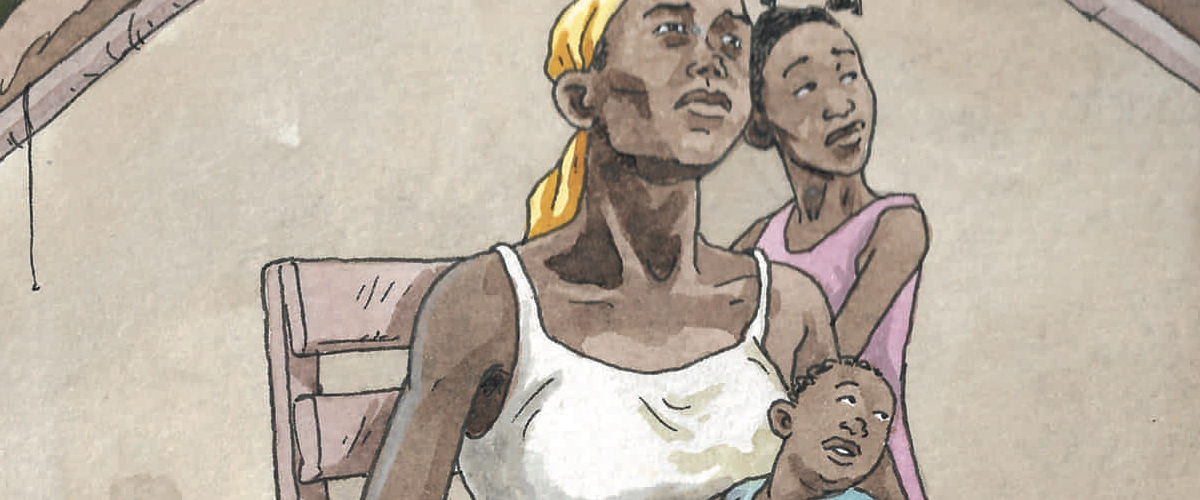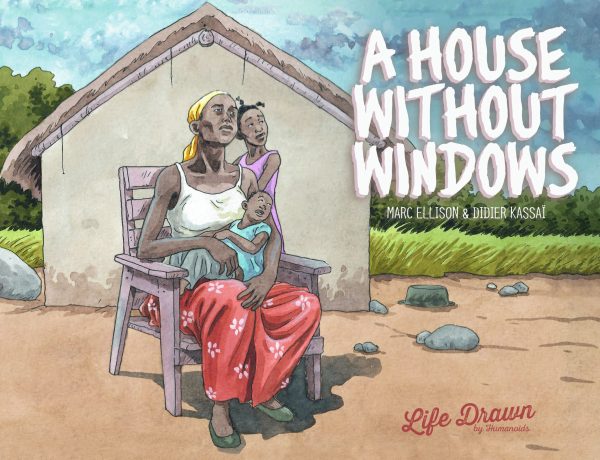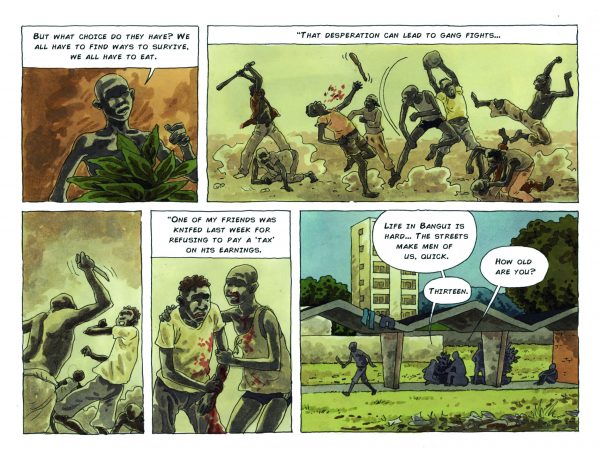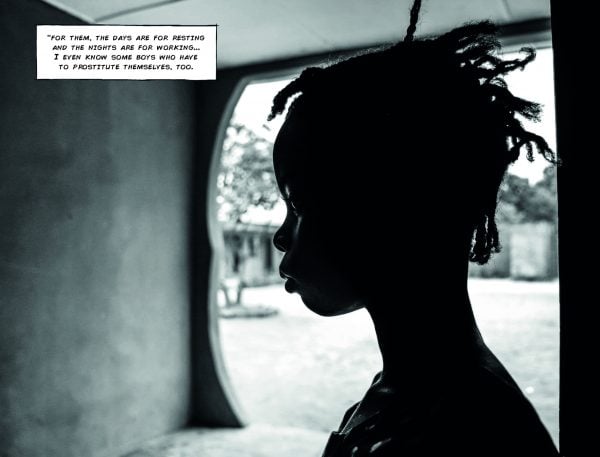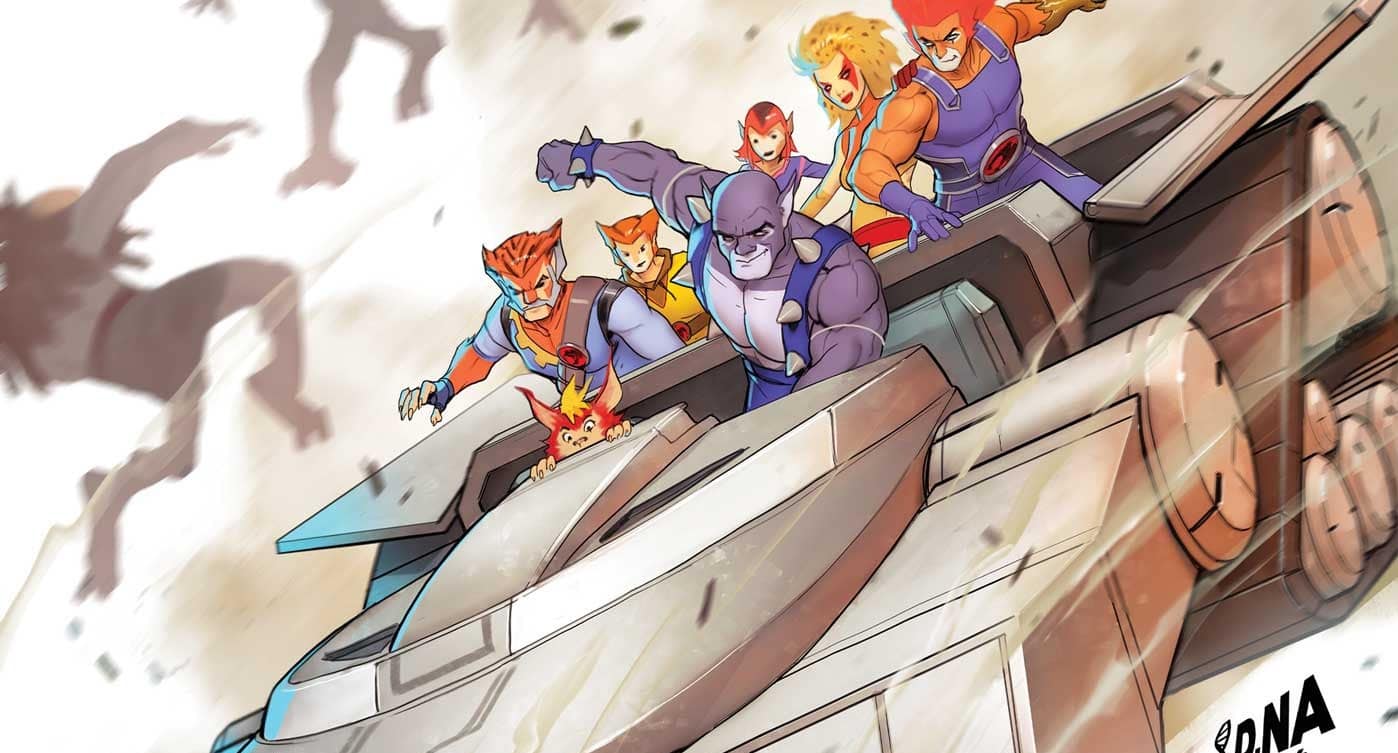A House Without Windows
Written and photographed by Marc Ellison
Illustrated by Didier Kassai
Humanoids Life Drawn
I’m going to confess — and I have a feeling that there are plenty others out there who could do the same — that I didn’t know much about the Central African Republic prior to reading A House Without Windows. A collaboration between writer/photojournalist Marc Ellison and artist Didier Kassaï — Kassaï was born in the CAR — the book is a piece of comics journalism that takes the reader deep into the troubled existence of the country, which Ellison names in the preface as “one of the worst countries in the world to be a child” before proving this statement again and again over the course of the book.
When I say “I don’t know much,” that’s an awfully kind way of covering my own ignorance and the real words I mean are “I don’t know anything,” at least in regard to the Central African Republic, amongst other locations on Earth. As explained by Ellison, it is a country beset by destructive chaos, born of corruption and political unrest, and maintained by poverty and violence. A population that is barely surviving contends daily with the marauders in conflict with each other. They take to camps, displaced but seeking safety from execution by the groups clashing with each other.
The biggest victims of this situation are the children — as ever. Relief groups do their best to make up for the closed schools, to keep the families together, to try and provide nourishment for the starving, to make sure medical care is provided, to save lives, and to help maintain spirits.
That’s the story that Ellison and Kassaï decided to cover. Partly, anyhow, because a central point to Kassai’s investigation is a question — why does the media outside of his home country ignore the nightmarish perils of the people who live there?
That’s actually a hard question to answer since the two men spend their time amongst the people drowning in the urgency of the situation — the victims and those providing relief — and documenting their experience is much more achievable. The hope is, obviously, that by getting the plight of these humans onto the page, the media will pay some attention to the humanitarian nightmare in the Central African Republic, and perhaps help and solutions might arise from that attention.
In the meantime, we have the stories of real people. A House Without Windows follows Kassaï as he meets the children of the relief camps and discovers their stories, which are mostly horrific. But Kassaï depicts these kids with dignity, able to express their circumstances clearly, with intelligence, and though living with the scars of their experience, attempting to not be bludgeoned by them on a daily basis. The situation is hopeless but the spirit of these kids is not.
These narrative sections built of Kassaï’s sequential work are accompanied by Ellison’s photography, which offers portraits of the kids and others who are featured in the comics and sometimes bleed into the narrative, with word balloons following into the photos and back to the comics. It’s an effective addition since, as effective as these works of comics journalism can be, the fact that these stories are communicated through drawings sometimes creates a buffer zone between the real situation and the reader at home. It’s hard to see the real person through an illustrator’s interpretation, and there is a safety in that for the reader. With Ellison’s photos, it’s much harder to sink into this dissociative relationship with the subjects of the book. That’s their actual eyes staring at you, their ravaged bodies right there in total honesty.
The book is also paired 360° video on YouTube to bring the story even more to life, and it does. While comics journalism is a powerful and informative format, A House Without Windows makes a case for hybrid journalism as the most effective presentation, with each aspect serving a different purpose in the information the story presents. It’s not something that every release can do, certainly, but on the occasion it can be accomplished, it’s an effective choice.



